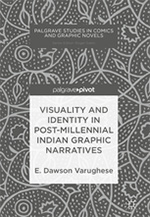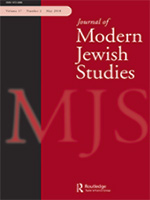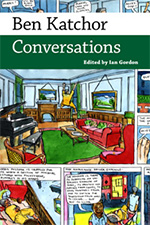Im Monitor werden in unregelmäßigen Abständen aktuelle Publikationen aus den letzten 6 Monaten vorgestellt, die für die Comicforschung relevant sein könnten. Die kurzen Ankündigungstexte dazu stammen von den jeweiligen Verlagsseiten. Haben Sie Anregungen oder Hinweise auf Neuerscheinungen, die übersehen worden sind und hier erwähnt werden sollten? Das Team freut sich über eine Mail an redaktion@comicgesellschaft.de. -> Zu früheren Monitoren.

Visuality and Identity in Post-millennial Indian Graphic Narratives
E. Dawson Varughese
Palgrave MacMillan
119 Seiten
ISBN 978-3-319-69489-4(Hardcover)
~$ 54,99
Januar 2018
Verlagsseite
This book investigates the intersection of Indian society, the encoding of post-millennial modernity and ‘ways of seeing’ through the medium of Indian graphic narratives. If seeing in Indian cultures is a mode of knowing then what might we decode and know from the Indian graphic narratives examined here? The book posits that the ‘seeing’ of post-millennial Indian graphic narratives revolves around a visuality of the inauspicious, complemented by narratives of the same. Examining both form and content across nine Indian, post-millennial graphic narratives, this book will appeal to those working in South Asian visual studies, cultural studies and comics-graphic novel studies more broadly.

Beyond Maus: Comic Books, Graphic Novels and the Holocaust:
Special Issue of Journal of Modern Jewish Studies 17(1)
Ewa Stańczyk (Hrsg.)
Taylor & Francis
126 Seiten
ISSN 1472-5886
Partly open Access
Januar 2018
Zur Verlagsseite
Art Spiegelman’s Maus transformed the comic book and revolutionized the cultural portrayals of war and genocide. More than 20 years after its publication, Maus is still the best-known and most celebrated graphic novel on the subject. And yet, as scholars have persuasively shown, the history of comic books on the Holocaust goes further back and is considerably richer than it is commonly thought. What is the “Holocaust comic book” then? What themes does it cover? What formats and aesthetic conventions does it use? More importantly, what can graphic narratives teach us about the politics of Holocaust memory, on the one hand, and the personal and family memories of the Shoah, on the other? This special issue addresses those and other comparative questions, using case studies from several countries. Covering the period from the 1940s until today, the contributions in this edition speak to wider political, social, cultural and personal engagements with the Shoah and show how the comic book has developed as a genre.

Ben Katchor:
Conversations
Ian Gordon (Hrsg.)
University Press of Mississippi
192 Seiten
ISBN 978-1-4968-1581-1 (Hardcover)
~$ 50,00
Februar 2018
Verlagsseite
uthor Michael Chabon described Ben Katchor (b. 1951) as „the creator of the last great American comic strip.“ Katchor’s comic strip Julius Knipl, Real Estate Photographer, which began in 1988, brought him to the attention of the readers of alternative weekly newspapers along with a coterie of artists who have gone on to public acclaim. In the mid-1990s, NPR ran audio versions of several Julius Knipl stories, narrated by Katchor and starring Jerry Stiller in the title role. Katchor’s work is often described as zany or bizarre, and author Douglas Wolk has characterized his work as „one or two notches too far“ beyond an absurdist reality. And yet the work resonates with its audience because, as was the case with Knipl’s journey through the wilderness of a decaying city, absurdity was only what was usefully available; absurdity was the reality. Julius Knipl, Real Estate Photographer: Stories presaged the themes of Katchor’s work: a concern with the past, an interest in the intersection of Jewish identity and a secular commercial culture, and the limits and possibilities of urban life.